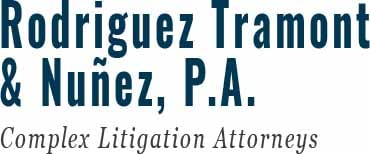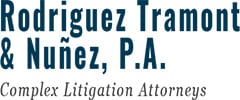Churning / Excessive Trading
Has My Investment Account Been Churned?
Many investor disputes with a brokerage firm allege that a stockbroker “churned” or excessively traded a brokerage account. The securities arbitration claim for damages from “churning” can be attributed to a stockbroker conflict of interest from a recommended investment strategy whose sole purpose was the enrichment of the stockbroker and his brokerage firm. To succeed in a securities arbitration “churning” claim with an arbitration panel a claimant must prove two case facts. The panel must conclude the stockbroker controlled the account transactions and the account activity was excessive based on the claimant’s risk tolerance and investment objectives.
There are many factors an arbitration panel will consider to determine whether a stockbroker had control over the transactions in a brokerage account. The most important factors include:
- Level of Client Sophistication
- Prior Investment Experience
- Client Trust and Confidence in Broker
- Amount of Time Client Devoted to Independent Research
- Percentage of Transactions Solicited vs. Unsolicited
- Simultaneous Positions with Multiple Brokerage Firms
- Extent to Which Client Fully Understands Strategy
With these factors in mind, an arbitration panel will determine the likelihood that a stockbroker was in control of the account transactions which include the specific strategies that were employed.
There are two standards of measure an arbitration panel will consider to determine whether the level of transactions in a brokerage account were excessive. The statistical measurements used are the turnover ratios and the cost ratios experienced through the management of the account. The turnover ratio measures how often the brokerage account is traded in a year. The cost ratio measures the annual cost incurred for the management of the brokerage account, as a percentage of the account. An investor’s level of sophistication and their ability to understand the risks associated with the particular investment strategy will help determine whether the level of activity is considered excessive.
The following statistical measures of the annualized account costs and turnover are thresholds which many considered to represent different levels of evidence for a “churning” claim.
| Cost Ratio | Turnover Rate | Level of Evidence |
| 4% | 2 times | Inference |
| 8% | 4 times | Presumption |
| 12% | 6 times | Conclusive |
These different levels of evidence for the “churning” of a brokerage account are presumptive and do not require any further proof of broker control over the account. Arbitration panels might simply decide whether it is reasonable to expect investment returns to cover the costs associated with the investment strategy and still provide the required investment return for the amount of risk assumed.
You are probably asking yourself whether you have a legitimate claim for damages. You are not sure whether stockbroker misconduct was the direct cause of your losses. You are not sure if your brokerage account was “churned” or excessively traded. Consider these FAQs.
Frequently Asked Questions:
Q: What if My Account Was Churned, But I Made Money?
Q: How Do I Proceed with a Claim for Damages from the “Churning” of My Brokerage Account?
Q: What if My Account Was Churned, But I Made Money?
In some instances, the recovery of damages from an arbitration award can include account losses, known as the “spilt milk” and/or any excessive commissions generated, known as the “skimmed milk”. In cases like yours, you might recover the excessive commissions generated by the brokerage firm as a disgorgement of gains from unlawful sales practices.
Q: I select the investment options in my 401(k) retirement plan. Does that make me a sophisticated investor?
An employer-sponsored retirement plan such as a 401(k) is considered a self-directed investment. This does not determine your level of sophistication, but it does give an indication of your risk tolerances. Consider the fact that the fees paid in an average equity mutual fund range between 0.75% and 1.50%. Compare these expenses with the commissions paid for the management of the brokerage account at issue. Your investment objective might be aggressive growth, but the costs you paid for the management of this investment objective exceeded the costs available through other professionally managed accounts. This difference in management expenses could result in damages, in addition to “out-of-pocket losses” or account under performance.
Q: How Do I Proceed with a Claim for Damages from the “Churning” of My Brokerage Account?
Take the Following Steps to Begin the Recovery of Your Investment Losses:
- Contact Our Legal Team to complete a Case Facts Summary
- Schedule a time For an Interview with an Industry Expert
- Gather Critical Case Documents
- Complete Risk Tolerance Assessment
- Assess Account Damages and Financial Advisor Misconduct
- File Statement of Claim for Securities Arbitration

